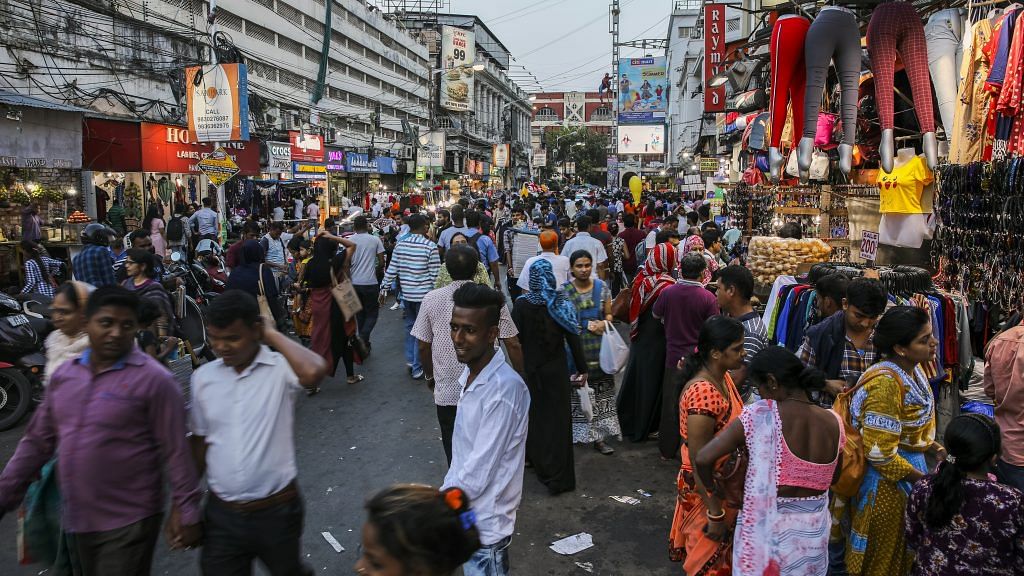The US is now officially in recession. According to the World Bank, 90 per cent of countries will be in recession in 2020 — the worst in eight decades. According to most forecasts, the global gross domestic product (GDP) is expected to contract. India will be in the same boat. The silver lining is that recent data suggests that employment has already started picking up in the country.
This recession, driven by the Covid-19 pandemic, is unique. Unlike past recessions, it is not driven by oil price shocks or a financial crisis. The contraction in the production of goods and services has resulted not from an inherent weakness in the economy, but because of executive decisions. Although it has created both demand and supply problems, predictions of a multi-year impact on economies may be excessively pessimistic. Previous recessions were often triggered by permanent shocks. Economies thus required a longer adjustment period to reach the new equilibrium.
Also read: Targeted policies, managing debt, ‘green’ economies — Gita Gopinath’s Covid survival guide
‘Downturn with different characteristics’
US recession dates are determined by the National Bureau of Economic Research (NBER). Normally they are based on broad-based economic activities slowing down for several months. The NBER methodology tries to avoid picking up very short periods that are not business cycles.
This time, the dating of the recession has been done due to the severity of declining economic activity. According to NBER, the decline started in the first quarter of this year. It was a very sharp decline and that is why NBER Business Cycle Dating Committee chose to declare it as a recession marking the end of the long expansion phase since 2009, in February 2020.
“The usual definition of a recession involves a decline in economic activity that lasts more than a few months. However, in deciding whether to identify a recession, the committee weighs the depth of the contraction, its duration, and whether economic activity declined broadly across the economy (the diffusion of the downturn). The committee recognizes that the pandemic and the public health response have resulted in a downturn with different characteristics and dynamics than prior recessions,” the NBER said in its statement.
Also read: Why migrant workers are starting to return to cities & how this can revive economy faster
Economic Outlook – synchronous recession
The World Bank’s June 2020 Global Economic Outlook report shows that a large number of economies will witness a decline in per capita output this year — the biggest share since 1870.
Not only will industrial economies see a contraction, even emerging economies that normally only witness slowdowns, rather than actual contractions, will also see shrinkage for the first time in at least 60 years.
According to the World Bank, current projections suggest that global per capita GDP will decline by 6.2 per cent. This will make this the deepest recession since 1945-46.
This recession is unique in that it is the only recession that has been triggered solely by a pandemic and the actions that were taken by various countries to contain it. Previous recessions were driven by a variety of reasons such as the oil price shocks, financial crisis, monetary policy responses to high-inflation, the Latin American debt crisis, etc.
Another distinct feature of the present recession is that for the first time there is a very high level of synchronisation. In the past if the US went into recession, it would affect other countries with the lag. Also, emerging economies would be hit, but often see a slowdown in the growth rate rather than an actual contraction.
The Economic Outlook report predicts that almost 90 per cent of countries are going to be in recession in 2020 together.
Also read: The 3 big unknowns that have forced Nirmala Sitharaman to be prudent with economic package
Impact on India
In terms of understanding how a global recession will affect the Indian economy, over and above the India specific lockdown and its impact, we look back at previous recessions.
In a 2009 paper co-written with my colleagues at the National Institute of Public Finance and Policy, we rejected the “de-coupling” hypothesis that had emerged after the Global Financial Crisis in 2008. We found that business cycles in India have become increasingly more coordinated with business cycles in the US and the global economy.
Our analysis showed that after 1991, as the Indian economy opened up over the years, the correlation between cyclical movements in India and those in the US and the world economy have increased significantly.
This means that not only will we be witnessing an impact of our actions during the lockdown, but also the impact of the global economic recession.
However, not all news is gloomy. Since the nature of the recession is different from that of previous recessions, the speed at which we may be able to come out of it also appears to be different. This might be due to the fact that the economy can get back on track faster than when the shock to the economy, such as an oil price shock, is a permanent one and to which the economy has to make long term adjustments.
May data from the Centre for Monitoring Indian Economy (CMIE) shows that after the lockdown was eased, employment has started getting back on track. According to the data, 30 crore people were employed in May as against 28 crore in April and 39.6 crore in March. This recovery is faster than expected.
How the difficulties of the temporary shock, the loss of business, piling debt, human suffering and the labour crisis are addressed will be important. How countries fare in the next few months, and the speed at which they can pull themselves out of the pandemic induced recession will depend on the policies they adopt to fight the virus as well as their relief, stimulus and reform packages.
Also read: Why industries in Maharashtra are reluctant to employ Marathi workers despite shortage
